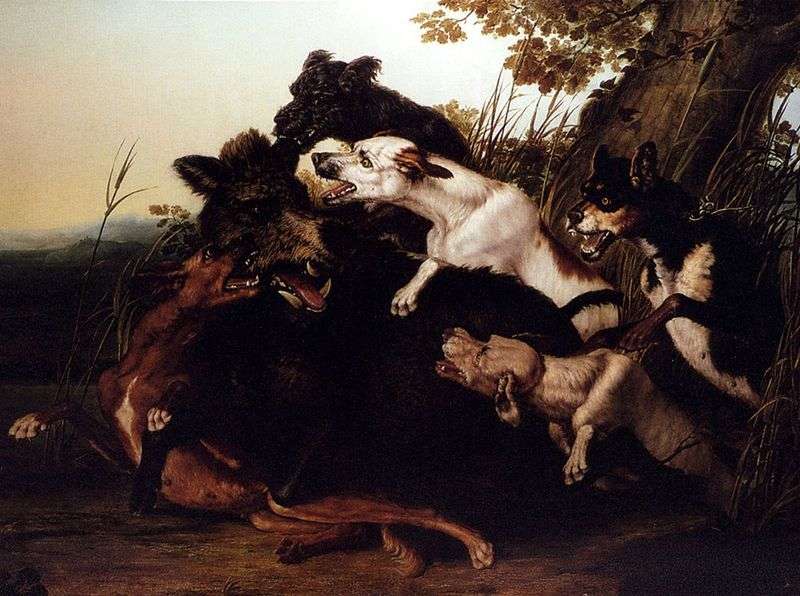
It is not difficult to guess that our distant ancestors, primitive people for a long time engaged exclusively in gathering and hunting, were limited and forced to be content with what nature gave. They themselves felt like her children, they were afraid of many things, even more – they did not understand. So there was a religion – from human fears and the desire to protect themselves from them. Over time, production technologies became more complex, but hunting as an occupation, cruel fun and a way to get food for food remained in the centuries. Let not immediately, but household scenes of hunting, its most dramatic episodes became themes for artists.
Thus, the Italian artist P. Vallati in 1888 depicted a wild boar, which is poisoned by dogs. Before us, in fact, the culmination moment of all hunting – the boar is overtaken by the dog pack, which literally before our very eyes turns into a frenzied pack, having smelled the smell of blood and flesh. There are several dogs, only one boar. He was already grabbed: one by the scruff, the other by the cheek, the third by the ear, the others squatting from behind. Angrily, the boar’s mouth is frighteningly frightened, dog fangs glisten. The picture can not be called static – let all the participants in this peculiar “battle” seem to have frozen in place, but it seems to be a moment – and everything will move, again a desperate battle will begin to boil.
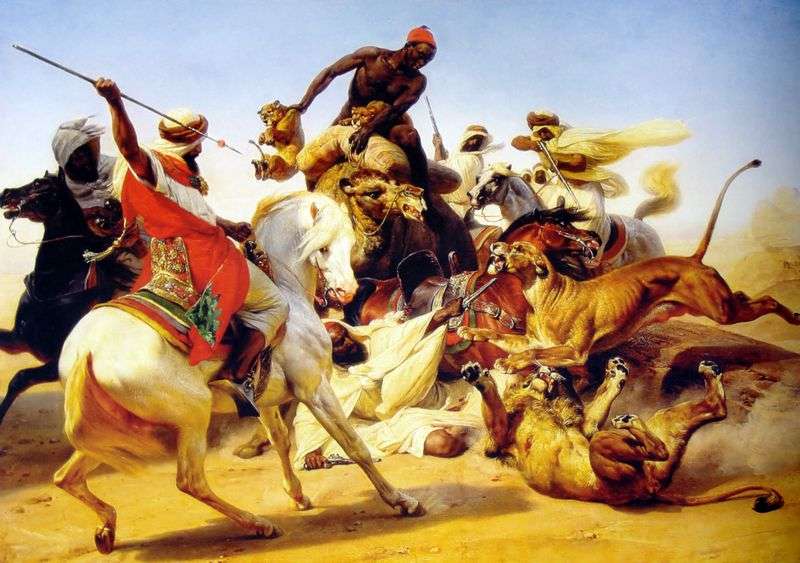 Lion Hunting by Rudolf Ernst
Lion Hunting by Rudolf Ernst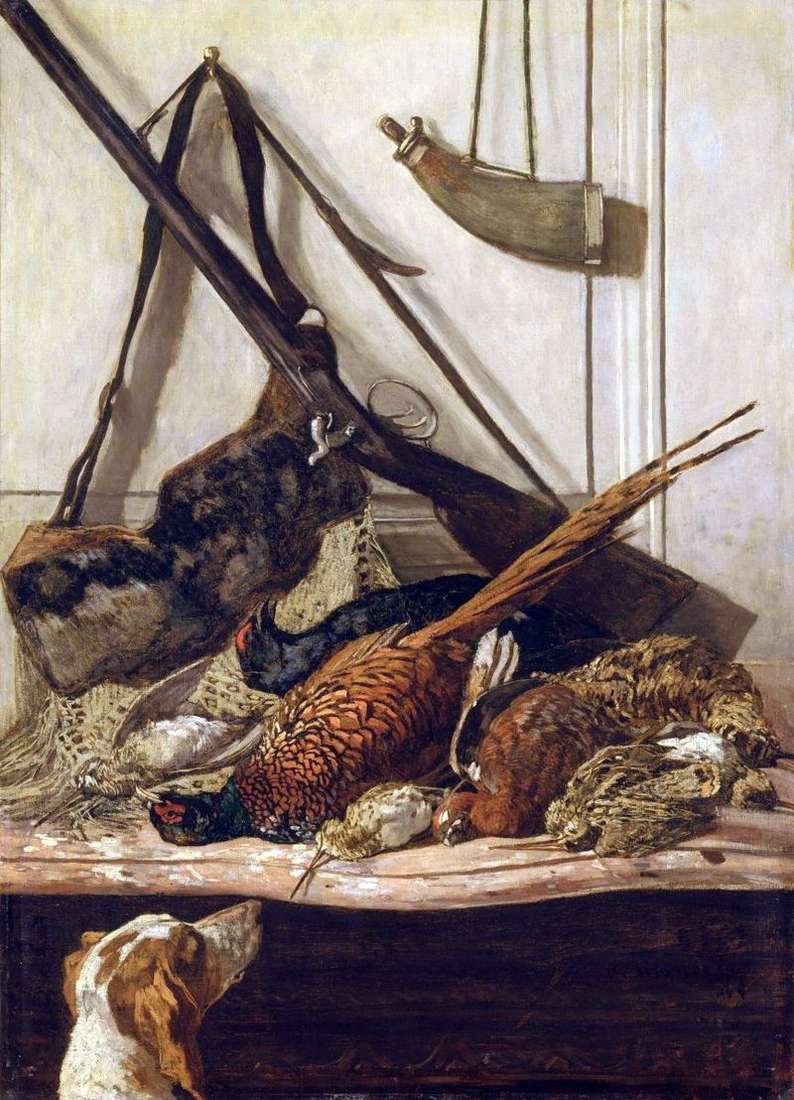 Hunting Trophies by Claude Monet
Hunting Trophies by Claude Monet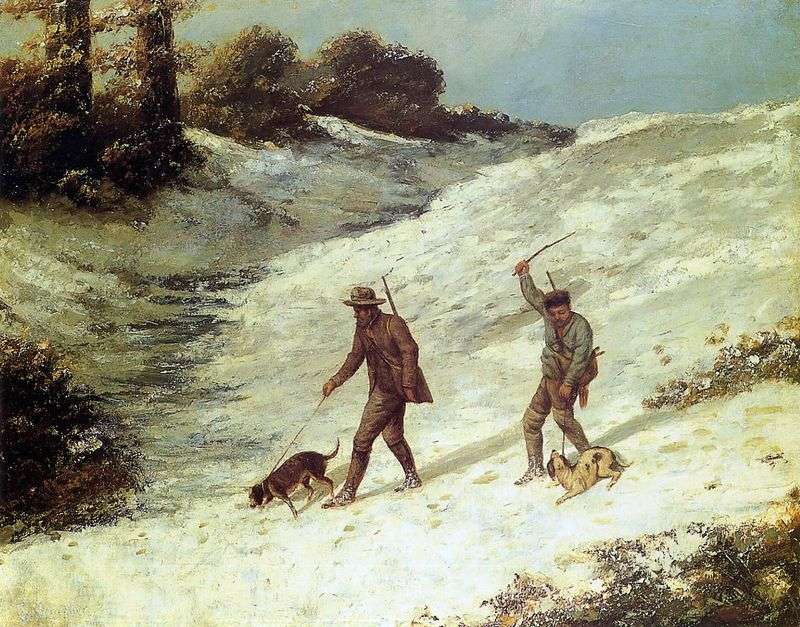 Scenes of hunting by Jean Desire Gustave Courbet
Scenes of hunting by Jean Desire Gustave Courbet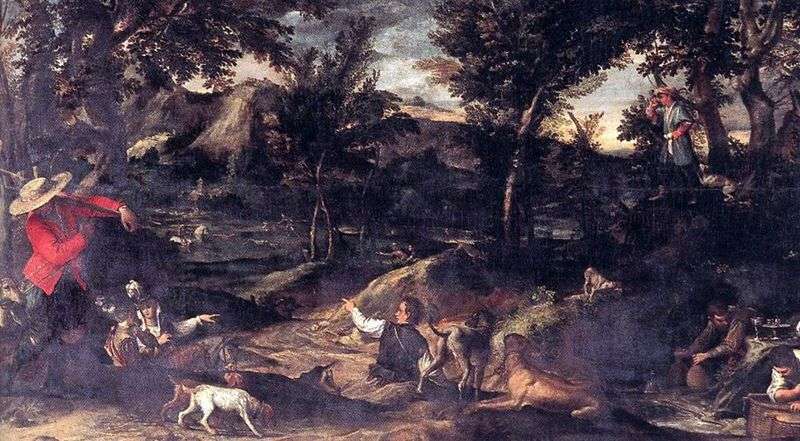 Hunting by Annibale Carracci
Hunting by Annibale Carracci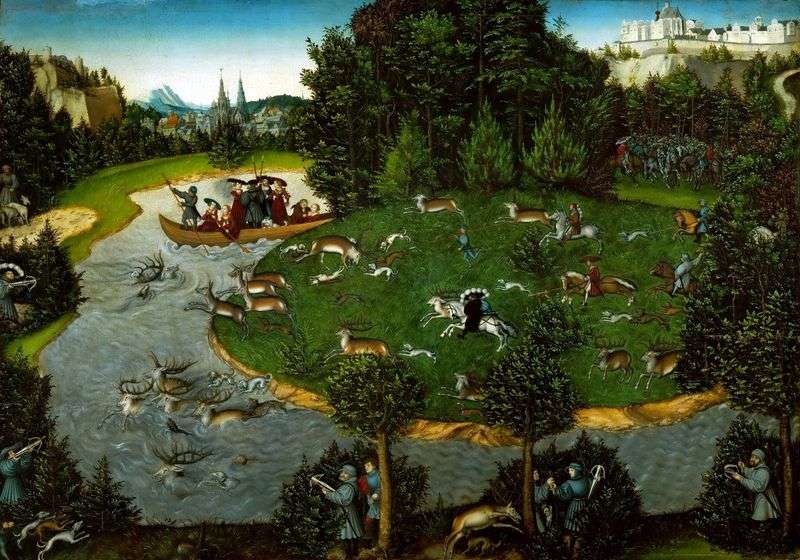 Hunting for deer by Lucas Cranach
Hunting for deer by Lucas Cranach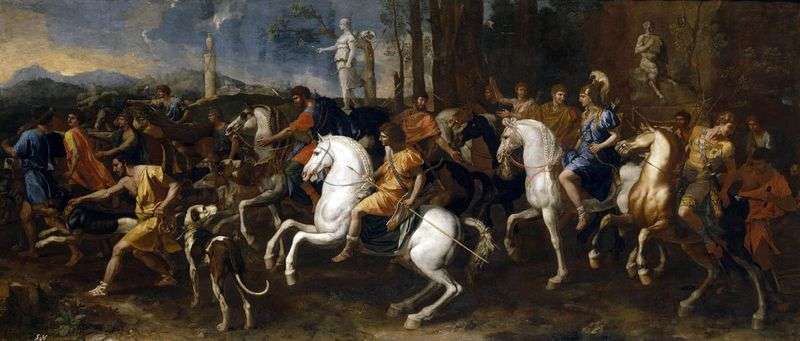 Hunting Meleagra and Atalanta by Nicolas Poussin
Hunting Meleagra and Atalanta by Nicolas Poussin Artemis by Rembrandt Harmens Van Rhine
Artemis by Rembrandt Harmens Van Rhine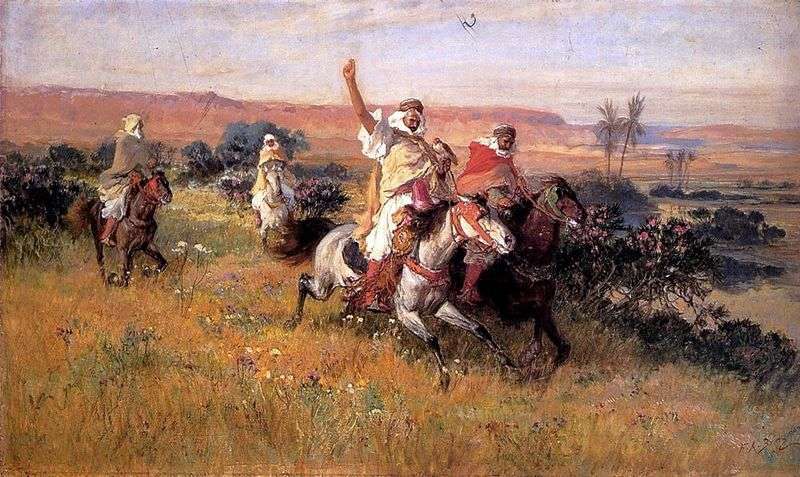 Hunting with a falcon by Frederic Arthur Bridgman
Hunting with a falcon by Frederic Arthur Bridgman